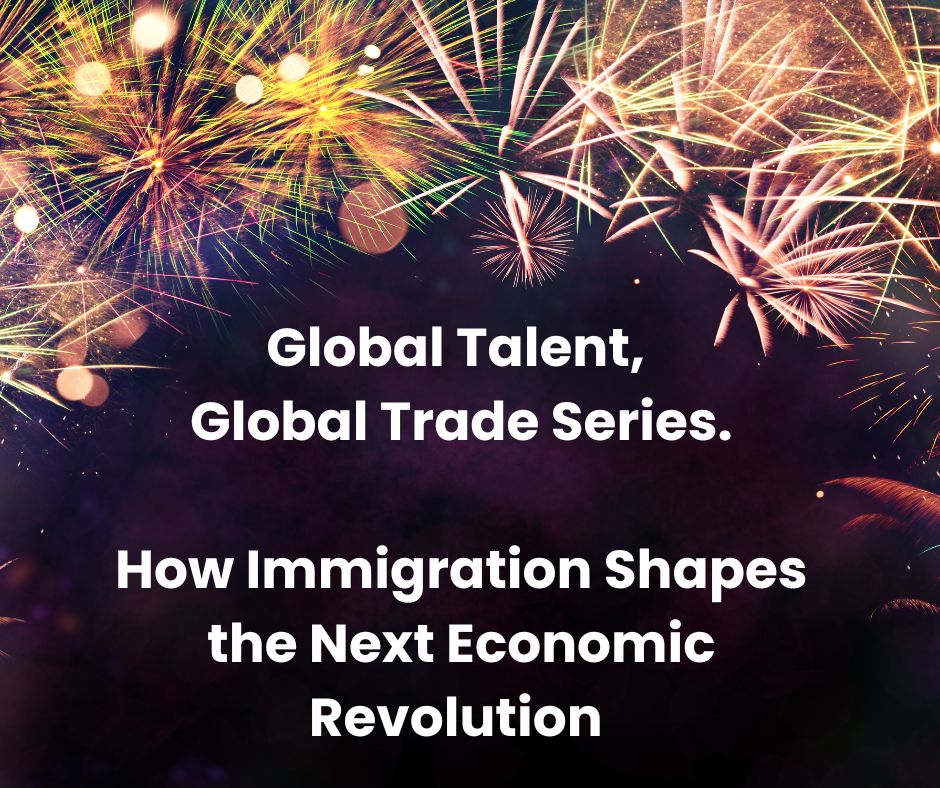Series Summary: Global Talent, Global Trade: How Immigration Shapes the Next Economic Revolution

This series examines how the sudden tightening of U.S. H-1B visas is reshaping the global flow of talent, trade, and investment, and why countries and businesses must act boldly to seize the opportunity.
Key Insights Across the Series
1. U.S. Policy Shift Creates Global Opportunity
· The sudden $100,000 H-1B visa fee signals a retreat from global talent.
· Startups, universities, and hospitals in the U.S. face immediate disruption.
· Countries around the world can now attract displaced engineers, researchers, and healthcare professionals.
2. Global Talent is the New Economic Resource
· Talent drives innovation, GDP growth, and global competitiveness.
· Skilled immigrants disproportionately contribute to high-growth sectors such as biotech, AI, and advanced manufacturing.
· Regions that welcome talent also attract capital, technology transfer, and trade opportunities.
3. Seven-Continents Analysis Shows Regional Strategies
· North America: Canada and Mexico can expand fast-track visa and investment corridors.
· Europe: Western and Eastern Europe can absorb talent and support startups.
· Asia: Southeast and South Asia can build regional tech and innovation hubs.
· Africa: Tech hubs and AfCFTA integration can turn talent inflows into pan-continental growth.
· Oceania: Australia, New Zealand, and Pacific partners can scale global talent programs.
· South America: Innovation hubs in Brazil, Chile, Colombia, and Argentina can attract R&D and startups.
· Antarctica: Scientific research opportunities symbolize global knowledge leadership.
4. Immigration Pushback Requires Strategic Planning
· Governments must invest in housing, urban infrastructure, cost-of-living supports, and long-term innovation ecosystems.
· A single skilled worker can generate ripple effects far beyond their immediate salary, creating companies, patents, and exports.
5. Talent Drives Trade and Investment
· Skilled workers are at the core of new trade corridors: Africa–Asia, Europe–South America, Pacific Alliances, and intra-continental networks.
· Human capital now determines the flow of global investment, supply chains, and high-value exports.
6. Businesses and Investors Must Act Now
· Global recruiting, regional hubs, partnerships, and knowledge transfer are critical strategies.
· Venture capital and private equity should follow talent, not just product markets.
· First movers in talent-rich regions will anchor the next wave of innovation and exports.
Strategic Recommendations
For Governments:
· Implement fast-track visas and streamline credential recognition.
· Invest in urban infrastructure, housing, and integration programs.
· Align immigration policy with trade and investment strategies.
· Promote regional collaboration to strengthen continental and cross-border talent corridors.
For Businesses and Investors:
· Recruit globally and establish flexible, regional operations.
· Fund local innovation hubs and incubators to anchor new markets.
· Link talent to supply chains, trade corridors, and export strategies.
· Use mobile talent to accelerate knowledge transfer and product development.
The Big Picture
· Human capital is now the primary driver of global trade and innovation.
· The U.S. has chosen isolation; the rest of the world can capitalize on this strategic misstep.
· Countries and companies that act boldly will capture decades of economic growth, industrial leadership, and trade dominance.
· Displaced talent does not wait — first movers define the next era of technological and economic power.